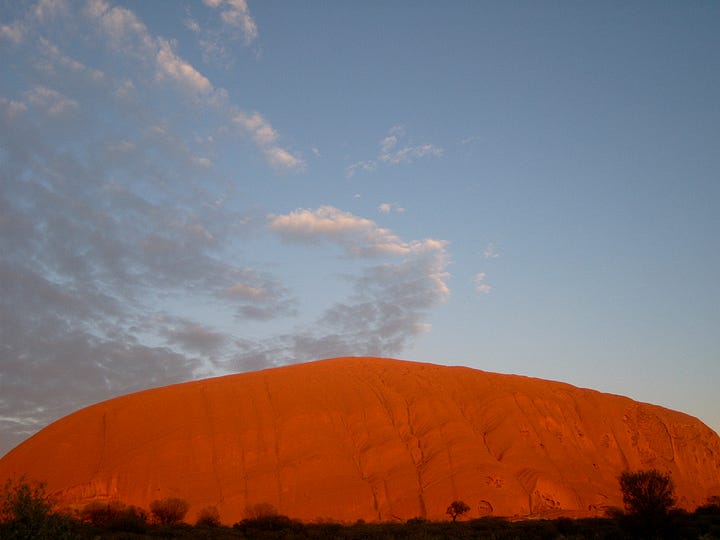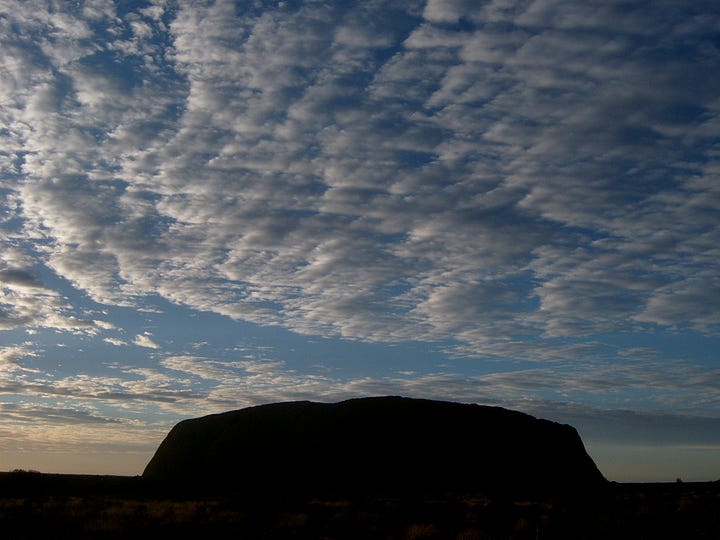Talking about climate change #16
The latest report from the IPCC (6 minute read)
Earth to politics:
Here’s what the science tells us.
Can we act now – please?
Andy Reisinger
If you follow the news about climate change, you’ve probably heard about a major report released in the last few weeks. The report came from the Intergovernmental Panel on Climate Change – usually shortened to the IPCC. Although I try to avoid acronyms, IPCC is one that many people are familiar with. I’ve used it here because it doesn’t make the article easier to read if I write “Intergovernmental Panel on Climate Change” a dozen times.
So, I thought it would be a good time to share more information about the IPCC – what they do, who they are and how they work. To accompany this article, I have a bonus Turnstone which I’ll be sending out in the next week or so, which contains an interview with climate scientist David Wratt, who was a member of the IPCC Bureau (more on that below).
What is the IPCC and how does it work?
The IPCC is made up of both scientists and government representatives. The “panel” itself is made up of representatives of the 195 governments which are members. Meetings like COP27 are meetings of these government representatives and negotiators, along with “observers”, who represent organisations interested in climate change (from Greenpeace to the Minerals Council of Australia). This is the political side of IPCC.
The science work of IPCC is somewhat, but not entirely, separate from the political side. It is led by the Bureau, made up of a small group of scientists from around the world (currently there are 34 scientists making up the Bureau). Many other scientists contribute to the IPCC’s work as authors, reviewers and editors. These scientists aren’t employed by the IPCC, but work for research organisations around the world.
The simplest overview I’ve found of the IPCC is this video. At the end of the video, it refers to a report due to be released in March 2023 – that’s the one you may have heard about in the news.
What is the IPCC? - YouTube (3 minute video)
The following article gives a good and simple written overview of the IPCC.
IPCC: The Intergovernmental Panel on Climate Change | Center for Science Education (ucar.edu) (3 minute read)
If you find diagrams helpful, the following page has a diagram of the IPCC structure. The text is a fairly dry read but is useful if you want to go into more depth about how the IPCC works.
Structure of the IPCC (11 minute read)
What is the latest IPCC report about?
The most recent IPCC report, the one released on the 20th of March, is what is known as a synthesis report. It draws together the findings of six different reports which were published over the last few years. There are actually two synthesis reports, the shorter “summary for policymakers” and a longer version. If you have the time and energy, it’s worth looking at these documents, but even the summary for policymakers is a fairly dense 36 pages (the longer version is 85 pages, without its index or any fancy formatting like cover pages). So, as well as the link to these summaries, I’ve linked to a few other sources which cover different aspects of the report.
AR6 Synthesis Report: Climate Change 2023 — IPCC (36 page summary and 85 page longer report)
As well as the reports, there’s also a 3 minute video summary from the IPCC. Here’s a separate link to the video summary.
CLIMATE CHANGE 2023: Synthesis Trailer - YouTube (3 minute video)
Here is an excellent, if depressing, summary from The Guardian.
Humanity at the climate crossroads: highway to hell or a liveable future? | The Guardian (5 minute read)
If you prefer hearing someone talk to reading, there’s an excellent, high-energy video from a couple of science communicators known as Zentouro and Climate Adam. And if you find this video useful, there are plenty more videos that the two of them have produced.
Summarizing the entire IPCC report in 5 minutes featuring @ClimateAdam - YouTube (5 minute video)
As an aside, Climate Adam has made an entertaining video on how to talk about climate change – it’s well worth a look.
How (not) to talk about Climate Change - YouTube (7 minute video)
The latest IPCC report is not without controversy. Near the start of this article, I mentioned that the political and scientific sides of IPCC were not entirely separate. This means that country representatives play a role in reviewing the summary for policymakers. As a result, language can get watered down in order to get the all-important consensus.
As an example, the summary for policymakers refers to sustainable, healthy diets (page 31). The longer report refers to Unsustainable agricultural expansion, driven in part by unbalanced diets (page 15). I think we all know what these statements mean – excessive meat consumption in wealthy countries is a problem. But you wouldn’t think so from these documents.
For more on this issue, there’s an article from fellow Substack writer Michael Thomas.
How Meat and Fossil Fuel Producers Watered Down the Latest IPCC Report (distilled.earth) (8 minute read)




This month’s climate poem.
Normally, I publish only a line or two of poetry then give you a link to where you can read the poem I’ve selected, because it isn’t legal or fair for me to republish an artist’s work. However, in this case the writer of these poems, New Zealand climate scientist Andy Reisinger, has made his work available to share under a Creative Commons licence. This means that I can print the whole wonderful series of haiku for you here, as long as I give credit.
The haiku summarise the first part of the latest group of reports from the IPCC – that’s the part released in August 2021. However, these points are all still relevant to the final report.
Earth to politics:
Here’s what the science tells us.
Can we act now – please?
Earth is heating up,The whole climate system:
Air, ocean, land, ice.
We’ve passed 1 degree,Which is warmer than we thought.
And rising further.
Heat waves, heavy rain,Droughts, cyclones: not abstract change,
But painfully real.
State, scale, rate of changeIn aspects and whole system:
“unprecedented”.
Do we know why? Yes.We’re the driving force behind
Climate system change.
Human influenceon the climate system is
“unequivocal”.
Where are we headed?Scenarios can show us
Alternate futures.
We’ll reach 1.5In roughly the mid-thirties.
Beyond that: our choice.
Rapid and sustainedEmission cuts halt warming
Within three decades.
Our best case reaches1.5 degrees; exceeds;
Then drops down again.
More than 1.5:More heat than Homo Sapiens
Has ever lived through.
Air, land, and ocean.A force-fed carbon cycle
May spew back at us.
Ice loss, rising seas:1 metre is a given. But
When? That’s up to us.
We’re not prescriptive:We’re just saying, the future
Still lies in our hands.
More heat, more extremes,Driving climate impacts:
Half degrees matter.
Don’t pin your planningOn means and likely ranges:
It’s the tail that stings.
Covid lockdowns cutEmissions, air pollution.
Warming? Not really.
A stable climateNeeds net-zero CO2:
That’s simple physics.
Removing carbonHelps net-zero, but beware:
Side-effects abound.
To limit warming,Stick to a carbon budget,
Cut other gases.
1.5 degreesNeeds strong, sustained methane cuts,
Not just CO2.
Lower methane helpsClimate and air quality.
That’s called a win-win.
We may not see itFor a decade, but climate
Will respond to us.
Approved by Zoom, signedSealed, delivered: 9 August
2021.
For a link to the original source, here is a link to Andy Reisinger’s Twitter account, where he has published the haiku, including some with diagrams.
Andy Reisinger (@ReisingerAndy) / Twitter
And, because he’s a scientist, Reisinger has a citation for every statement he’s made in his haiku series – here is the version of the haiku with citations.






The Uluru photos were beautiful. Your efforts in documents like this are important. I believe it has never been more important than now for people to distill the complex and make it accessible. I think you do that very well.
Wow! I love the continuous haiku. Simple, spare, truth. Thank you for the resources!